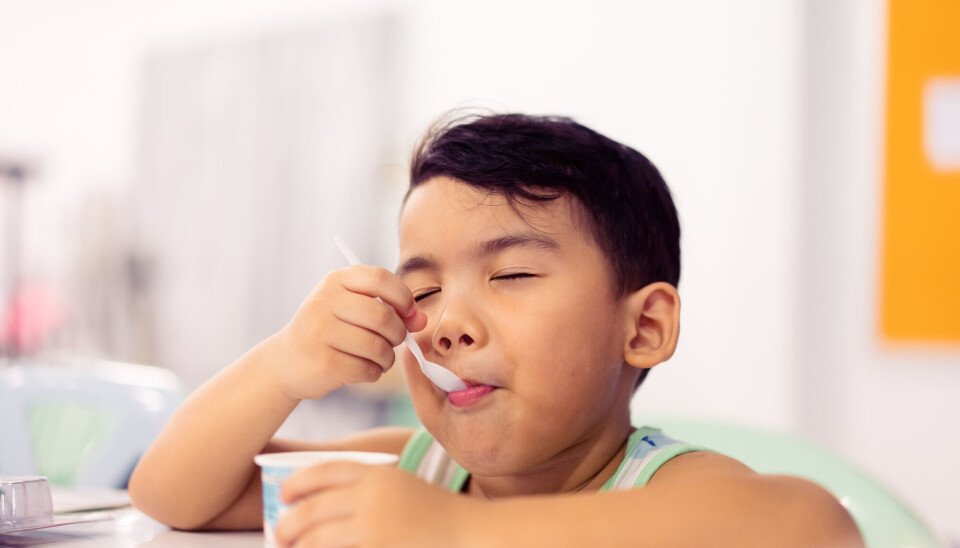THIS ARTICLE/PRESS RELEASE IS PAID FOR AND PRESENTED BY the Western Norway University of Applied Sciences (HVL) - Read More

Children need new ways to learn about taste
In schools and daycare facilities, food education has had a rigid focus on health.
What is healthy, and what is unhealthy?
What do I like, and what don’t I like?
Is the food sour, salty, sweet or spicy?
This is how we tend to talk about food. However, these concepts are inadequate when faced with an experience as complex as taste, according to researchers Eli Kristin Aadland and Hege Wergedahl. They believe that taste is so much more.
For instance, taste may relate to care – is the meal made with love? It may relate to what flavours are trendy, or moral aspects of the meal. It may relate to closeness to nature – how was the food on our plates grown? And it may involve ethical dimensions. Are we taking care of ourselves and the planet through the food we make?
Memories, feelings and togetherness
"We sense the food using our physiological system. However, we taste it via our psychological system, and share experiences of taste with others in the social system," Aadland says.
She is the project manager of TASTE Didactics – Food and Critical Thinking.
"The physiological aspect relates to the purely scientific: taste buds, sour, sweet, salty. However, in order to taste, we must also include the psychological aspect. For instance, this relates to how the food is experienced: about memories and feelings, those with whom we share the food, and how we talk about it," she says.
The TASTE Project will be carried out over the span of four years, and its structure is two-fold.
The researchers will visit schools and daycare facilities to investigate how children currently learn about taste, reflection and taste competence. They will subsequently create a teaching plan for both schools and daycare facilities. They will analyse the situations in Norway and Denmark, in parallel.
Professor Karen Wistoft from Aarhus University, formerly a professor at the Western Norway University of Applied Sciences (HVL), will also take part in the project. She has conducted considerable research on taste, and the research group will be utilising her theories on taste dimensions in the project.
A shift away from the recipe mindset
In the school system, food and health education has until now been characterised by an instructive culture. Pupils receive a recipe and are tasked with learning to follow it, and the are not accustomed to deviating from it.
"We need to focus less on the recipe mindset and incorporate more creativity and reflected choices," Aadland says.
Aadland and Wergedahl are seeking to develop a teaching plan that enables children to make their own food choices, based on values such as sustainability, health, understanding of taste and enjoyment of taste. Children will then become agents of change in a world in need of more critical thinking around food. Furthermore, they will also be able to influence parents and caregivers to make better choices.
The psychological and social aspects
In TASTE, the researchers talk about three dimensions of taste experiences:
- the physiological
- the psychological
- the social
The latter two categories have been overlooked in the Norwegian education model. However, there is now a new way of thinking in the Curriculum for Compulsory School.
Among other things, the classes on food and health now include the following: Pupils are to critically assess the information about the food product and discuss how consumer power can influence global and local food production. They are to use their senses to assess the quality of the food products. They are also to discuss how taste can influence food preference and food choices.
These are all things Wergedahl and Aadland are interested in facilitating through the development of a new teaching plan.
"We will be including this way of thinking for the younger children at daycare as well. There too, we need to incorporate a broader understanding of what taste actually is," Wergedahl says.
Until now, the focus has mostly been on teaching the children what is right and wrong in terms of food. Instead, we want the choices they make to come from within.
This article/press release is paid for and presented by the Western Norway University of Applied Sciences (HVL)
This content is created by the Western Norway University of Applied Sciences' communication staff, who use this platform to communicate science and share results from research with the public. The Western Norway University of Applied Sciences is one of more than 80 owners of ScienceNorway.no. Read more here.
See more content from the Western Norway University of Applied Sciences:
-
Students who fall behind: "I completely lost faith in myself. I didn’t think I’d ever have a partner, a job, or a life"
-
Research on weight loss surgery: Patients and therapists often do not talk about what really matters
-
Why does collaboration on patient care falter?
-
Could the answer to new clean energy solutions lie right in front of us – in the plant kingdom?
-
The story behind a spectacular finding:Loneliness could be a direct cause of type 2 diabetes
-
Stigma has severe consequences for bereaved after drug-related deaths

































